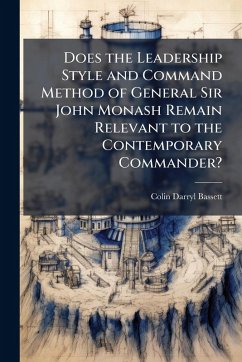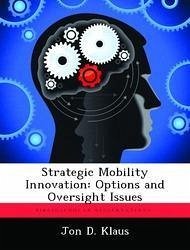
Innovation Versus Adaptability
Seizing the Initiative Through Creative Thinking Versus Reacting to the Enemy
Versandkostenfrei!
Versandfertig in über 4 Wochen
15,99 €
inkl. MwSt.

PAYBACK Punkte
8 °P sammeln!
Whether adjusting to a new environment or to an evolving threat, America's Army of the 21st century must be adaptable and become more innovative. The operational environment is becoming more complicated and complex. Societal trends, such as globalization and the impact technology has and continues to have are some of the trends that contribute to this complexity, leading to numerous challenges for an operational force. Whether faced with a thinking and dynamic enemy or an unfamiliar and challenging environment, Army forces must be able to adapt but also--and perhaps more importantly--to innova...
Whether adjusting to a new environment or to an evolving threat, America's Army of the 21st century must be adaptable and become more innovative. The operational environment is becoming more complicated and complex. Societal trends, such as globalization and the impact technology has and continues to have are some of the trends that contribute to this complexity, leading to numerous challenges for an operational force. Whether faced with a thinking and dynamic enemy or an unfamiliar and challenging environment, Army forces must be able to adapt but also--and perhaps more importantly--to innovate in order to maintain the initiative. To facilitate and improve organizational change that produces leaders who are innovative as well as adaptive the Army must institutionally reevaluate how it trains, educates and develops field grade leaders, in order to ensure that they are innovative and adaptable and moreover, that they are willing to underwrite risk and reinforce innovation of subordinates within their organizations. This is perhaps even more critical as it will enable innovation throughout the institution and potentially transform or fundamentally change the approach to officer education. Army leadership doctrine addresses innovative and adaptive leadership but could do this more effectively. Corporate approaches to innovation within the contemporary business world are relevant, even though there are distinct differences between corporations and the Army. Learning organization behavior, the concept of complex-adaptive problems and organizational culture are concepts that can be applied to both business corporations and the Army. Academic research provides a view of how hierarchical and bureaucratic organizations improve organizational innovation within their respective culture. Changes the Army can and must make involve leadership, doctrine, training and education to move from a culture of process to a culture of innovation. Army leadership can make changes that over This work has been selected by scholars as being culturally important, and is part of the knowledge base of civilization as we know it. This work was reproduced from the original artifact, and remains as true to the original work as possible. Therefore, you will see the original copyright references, library stamps (as most of these works have been housed in our most important libraries around the world), and other notations in the work. This work is in the public domain in the United States of America, and possibly other nations. Within the United States, you may freely copy and distribute this work, as no entity (individual or corporate) has a copyright on the body of the work. As a reproduction of a historical artifact, this work may contain missing or blurred pages, poor pictures, errant marks, etc. Scholars believe, and we concur, that this work is important enough to be preserved, reproduced, and made generally available to the public. We appreciate your support of the preservation process, and thank you for being an important part of keeping this knowledge alive and relevant.












